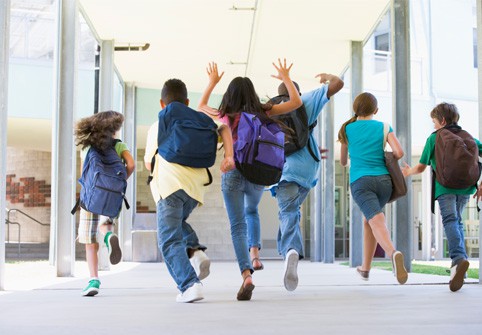15 Ways to Keep Creativity in the #EdChat Conversation

Simply put. Creativity keeps me going. There is nothing comparable to witnessing a student present a project that not only represents what he has learned but who he has become. However, way too often the topics of standardized testing, lack of funding, political involvement, students’ data, and stressed out teachers dominate educational conversations. Quite frankly, it gets old. Sure, these topics deserve their fair share of time, but I fear creativity, a vital characteristic of an engaged and productive classroom, is somewhat overlooked at times.
In celebration of all those students secretly, and oftentimes audibly, yearning to create, let’s take a look at fifteen ways to keep creativity in the classroom.
1. Spontaneity and Creativity Warm-Up
Do you ever need to re-energize the class before embarking on a creative assignment? Try this fun and simple warm-up:
2. Wax Museum
Do you think asking your students to be silent and totally motionless is uncreative and boring? Not so. Take a look.
Need more information about this interesting activity? Click here.
3. 60-Second Recap
This one reads easily but works hard. Give it a try and watch your students have their most in-depth and challenging conversations as they try to mash up their understanding in such a short amount of time.
Check out this blog post for more details about the 60-Second Recap.
4. The Virtual Substitute
If you must be out of the classroom, leave your students with a Twitter hashtag, e-mail address, digital learning platform, and the most creative, and cheesy, substitute you can find. Who knows! You may just have a little fun yourself.
5. Kinesthetically Reinforced Learning
Sometimes to make the simplest things stick, a little physical activity is all that is needed. Check out this direct quotation with proper MLA parenthetical citation:
6. Time-Lapsed Video Tutorial
Some students’ projects just leave the class totally amazed and wondering, “How did you do that?” Well, giving a kid a chance to answer that question via a time-lapsed video tutorial could blow your mind even more. Watch this student use cans of spray paint as his artist’s brushes. Simply jaw-dropping.
7. Movie Trailer
Much like the 60-Second Recap, a lot of planning goes into creating a movie trailer. Take a look at this one, and I bet you never would have guessed it served as an AP Language project. Pretty cool, huh?
Care to see the full project? These students turned a backyard into a playground of assigned literary standards.
8. Long-Distance, Shared Classes via Video Conferencing
Want to liven things up a bit by joining classes across the county, state, or even country? Sure, it takes a lot of planning on the teachers’ sides, but the end results are phenomenal. Here’s a small peak into an AP Language writing assignment that was shared simultaneously by two classes nearly twenty miles a part.
This video was several weeks in the making. Click here for the blog post that drops all the minute details behind this video, and click here for the lesson plan that used Twitter to bring four classes in three different states together after school to discuss rhetorical strategies.
9. An Originally Written Song
This team decided to demonstrate their knowledge of Arthur Miller’s The Crucible through rap. Using Acoustica Mixcraft, strobe lights, smartphones, and video editing software, these Studio 113 students had a blast.
If you don’t have access to a microphone and any recording software, no worries. Just allow your students to use their smartphones and SoundCloud. Here’s how.
10. Visual Notetaking
Check out this example of notes from “Comics in Education.”
11. Interactive/Gamified Learning Structures
If the students are a bit bored with the content, ask them how to gamify the lesson. Better yet…create some off-the-wall interactive learning structure that involves improvisational acting, power cards, and backchannels. This is the foundation of the Revolutionary Battle structure.
If that doesn’t work, add some poker chips and a point system to spice up the undeniably boring multiple choice questions that are sometimes unavoidable. The Voting Chips structure does just that. Here’s the blog post outlining all details.
12. Mini-Movie
If you have plenty of time and a well-planned lesson, give students the autonomy to create a multi-camera video set to famous music lyrics. From the Rolling Stones to Matchbox 20 to Justin Timberlake, this video truly rocks.
13. Collaborative E-book
Having your students write and create a book used to sound nearly impossible. Not anymore. Get your bookmark ready and dive in to this collaborative e-book with pictures and videos. Click here for the accompanying blog post with video tutorials.
14. Celebratory Presentation
Don’t forget to invite the students to celebrate by presenting to a challenging audience. Here’s a peak into a presentation to a mini-conference of teachers and educational administrators.
15. Teacher Play
Perhaps the most overlooked, yet essential, aspect of fostering a creative classroom atmosphere is the necessity for teachers to play, to have fun, to enjoy their jobs. If not, why in the world should students want to grow up and become adults? To be miserable? Oh no. Rock it out, teachers. Rock it out!
Hey, awesome educators. Join in the conversation. What creative things are you witnessing?








0 Comments
Leave a Comment
Your email address will not be published. All fields are required.